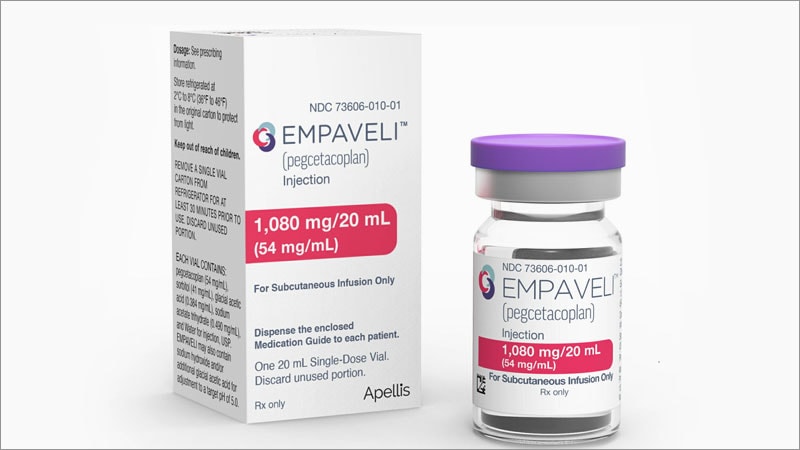ASRS Reports Retinal Vasculitis Cases After Pegcetacoplan Injection
核心概念
Retinal vasculitis cases linked to pegcetacoplan injection.
摘要
The American Society of Retina Specialists (ASRS) reported six cases of occlusive retinal vasculitis post pegcetacoplan injection. The etiology remains unclear, with evolving patient outcomes. Pegcetacoplan, targeting complement factor 3 in drusen, was approved for geographic atrophy treatment. Trials showed low rates of intraocular inflammation but no retinal vasculitis. Apellis Pharmaceuticals is investigating the cases, emphasizing the importance of sterile practices during injection.
客製化摘要
使用 AI 重寫
產生引用格式
翻譯原文
翻譯成其他語言
產生心智圖
從原文內容
前往原文
www.medscape.com
Retina Group Warns on Complications From New GA Drug
統計資料
The pivotal phase 3 DERBY and OAKS trials reported rates of intraocular inflammation (IOI) at 24 months of 3.8% and 2.1% in eyes injected monthly and every other month, respectively, vs. 0.2% in the placebo group.
Apellis Pharmaceuticals stated the rate of retinal vasculitis in real-world use was about 0.01% per injection.
引述
"People have hypothesized that it may be manufacturing, though the cases did not share lot numbers as per [the] ASRS announcement." - Demetrios G. Vavvas
從以下內容提煉的關鍵洞見
by Richard Mark... 於 www.medscape.com 07-18-2023
https://www.medscape.com/viewarticle/994508
深入探究
How can the medical community address the challenges of unexpected complications from new drugs?
To address the challenges of unexpected complications from new drugs, the medical community should prioritize post-market surveillance and reporting systems. It is crucial to establish robust mechanisms for healthcare providers to report adverse events promptly. This allows for the early detection of potential issues, as seen in the case of occlusive retinal vasculitis following pegcetacoplan injection. Additionally, ongoing monitoring of patients receiving new drugs is essential to identify any emerging patterns of adverse effects. Collaboration between regulatory agencies, pharmaceutical companies, healthcare providers, and professional medical societies is key to ensuring timely communication and appropriate responses to unexpected complications.
What alternative explanations could there be for the occurrence of retinal vasculitis post pegcetacoplan injection?
While the exact cause of retinal vasculitis post pegcetacoplan injection remains unclear, several alternative explanations could be considered. One possibility is related to the drug's formulation or manufacturing process. Variations in drug preparation, storage, or handling could potentially lead to unexpected immune responses or inflammatory reactions in some patients. Another factor to consider is individual patient characteristics or underlying conditions that may predispose them to such complications. Genetic factors, immune system abnormalities, or pre-existing ocular conditions could contribute to the development of retinal vasculitis in response to pegcetacoplan. Furthermore, procedural factors during the injection process, such as technique or sterility, could also play a role in triggering inflammatory reactions in the eye.
How can advancements in drug manufacturing processes reduce the risk of adverse events like occlusive vasculitis?
Advancements in drug manufacturing processes can significantly reduce the risk of adverse events like occlusive vasculitis by ensuring product quality, consistency, and safety. Implementing stringent quality control measures throughout the manufacturing chain, from raw material sourcing to final product distribution, is essential to minimize potential risks. Utilizing advanced technologies for drug formulation, packaging, and storage can help maintain the stability and integrity of the product, reducing the likelihood of unexpected reactions or complications. Furthermore, continuous monitoring and surveillance of manufacturing processes, coupled with regular audits and inspections, can identify and address any potential issues proactively. Collaboration between pharmaceutical companies, regulatory authorities, and healthcare providers is crucial to implementing best practices in drug manufacturing that prioritize patient safety and minimize the occurrence of adverse events.
0
